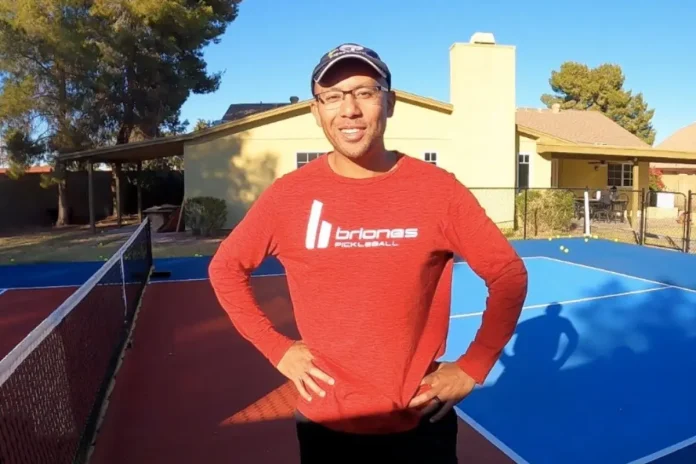Best Pickleball Coaching Tips: Jordan Briones, a seasoned pickleball coach who has trained thousands of players from age 30 to professional level, shared 13 essential tips to improve gameplay quickly. His advice focuses on ready positions, footwork, returns, dinking, serving, and attacking strategies that can help players gain an advantage during matches.
Briones emphasized that watching top professionals reveals a consistent pattern in their stance and movement. He stressed the importance of maintaining a relaxed ready position with elbows slightly bent and the paddle close to the body. This setup allows players to hit with more force and react faster than standing too far forward.
He also highlighted the need to return the ball with forward momentum. Players who return the ball without momentum often struggle to reach the nonvolley zone in time. By moving into the shot, players can secure a stronger position for the fourth shot and respond effectively to fast serves.
Third Shot Strategy
At higher levels of play, Briones explained that the third shot drive is mainly a setup for the fifth shot drop. The goal is to keep the ball low above the net, allowing the player to move into the nonvolley zone for a better position.
Footwork and Shuffle Steps
Good footwork is key. Briones recommends using the correct shuffle step: moving the inside leg first to reach wide balls and creating space with the outside leg. This method ensures players can hit the ball in front of them without overreaching.

Paddle Position and Volleys
To avoid hitting fast shots into the net, the paddle face should be slightly open, and players should push the ball out horizontally rather than down. This simple adjustment improves depth and consistency during volleys.
Defense and Backhand Use
Briones advised using the backhand in defensive situations. Players scrambling for high shots can better control the ball and stay in rallies by dropping low and defending with either a one- or two-handed backhand.
Targeting the Opponent’s Dominant Side
During attacks or counterattacks, targeting an opponent’s dominant side first can expose weaknesses and create opportunities. This is a common strategy in professional-level play.
Middle Coverage in Doubles
When playing doubles, the crosscourt player should prioritize covering the middle. Moving close to the center line ensures faster reaction to fast middle balls and helps maintain control of the rally.
Reset Shots
Resetting in transition requires lifting the ball gently with an open paddle face. Punching the ball horizontally can make it harder to land in the nonvolley zone, slowing down the players’ ability to advance.
Adding Power on Serve
To improve serves, players should transfer body weight forward and finish inside the court. This technique uses the full body for more power and better control without compromising readiness for the next shot.
Practicing Returns
Daily practice of returns, especially with forward momentum, can reduce missed points and improve side-outs. Briones recommends returning serves and practicing up to the fourth shot to build consistency and positioning.
Aggressive Dinking
Players should focus on aggressive dinks rather than dead dinks. Pushing dinks to the nonvolley zone line forces opponents to react and opens up opportunities to attack.
Attacking High Balls
When a ball comes above waist level, players should maintain an aggressive mindset. Attacking these balls creates scoring opportunities and can put pressure on opponents in transition play.
These tips collectively help players improve control, positioning, and offensive strategies. By applying these techniques consistently, players can elevate their skill, reduce defensive errors, and gain an edge in both recreational and competitive matches.
News in Brief: Best Pickleball Coaching Tips
Jordan Briones shared 13 key pickleball tips for quick improvement. Focusing on ready positions, footwork, returns, serves, dinking, and attacking high balls can give players an advantage. Practicing these strategies improves control, positioning, and consistency, helping players perform better in both doubles and singles matches.
ALSO READ: 5 Game-Changing Pickleball Tips Every Beginner Needs to Know Now

